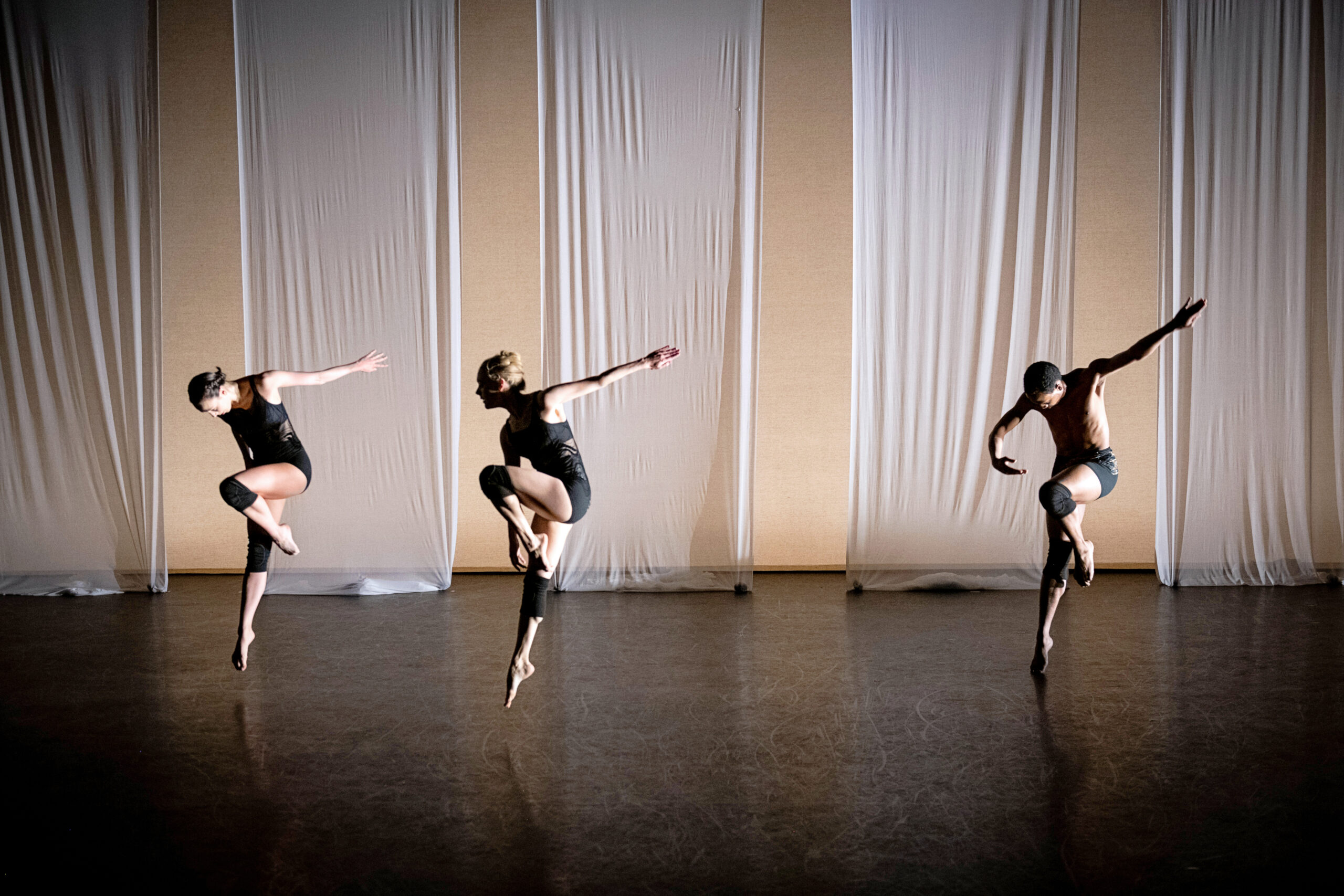The Do’s and Don’ts of Holding a Fundraising Event
An undeniable part of any artistic project is amassing funding—a necessary step that many choreographers dread. But a fundraising event doesn’t have to be a sing-for-your-supper experience or a night of awkward networking. Your gala can match the aesthetic of your company, whether that means a relaxed evening with old friends and new supporters, a sit-down, intimate donor dinner or even a choose-your-own-adventure experience for attendees looking to mingle at their own pace. Choreographer Amanda Selwyn, whose eponymous company celebrates its 23rd anniversary this year, has successfully tried all three of those approaches. The common denominator? “I plan every moment,” she says. “That’s where the choreographer and producer in me comes out.” With the right approach, preparation and careful choreography of moving parts, a fundraising gala can be the productive, enjoyable event you need it to be.
DO Explain the Benefits
Danielle Russo, artistic director of her own project-based cooperative, Danielle Russo Performance Project, is as transparent as possible about where monetary donations go. “I’ll say, ‘This is what our budget is, this is what we have secured, and this is the balance,” she says. “But I’ll also break it down in terms of ‘A gift of x amount of dollars will support one of our dancers for one week of rehearsals.’ It gives donors the sense of what they’re contributing to.” Selwyn’s goal with each fundraising event she holds is always the same: “The formula that I aspire to is that 30 percent of the revenue goes to cover the event, and 70 percent is our net,” she says.
DO Carefully Consider Timing
Plan well in advance. Selwyn recommends beginning to plan your event six months beforehand.
Consider whether—or not—to link the event to a premiere. Because of the volume of work involved in launching a gala and a premiere, some artists may choose to separate an annual fundraising event from their performance season. “That said, it can be nice when we’re engaging performance audiences to have a benefit night at the same time,” Selwyn says. “It feels natural.”
Last-minute deadlines can work in your favor. “Donors will respond more generously if they know it’s the final countdown to a production—that their gift is not only critical but will make something happen,” says Russo.
DO Create a Host Committee
Selwyn asks current and former board members and friends of the company’s dancers and collaborators to serve on a gala committee and sell a certain number of tickets to that year’s fundraising event. “That’s how we meet our sales goals,”
says Selwyn. “It’s very hard to get people to attend a fundraising event, unless they’re affiliated in some way with our organization.”
DON’T Pay for a Venue, If You Can Help It
The cost of renting a venue for your event is likely the biggest-ticket item in your budget, so having a space donated can make a big difference in your overhead. It’s also a way for a donor who might not have the financial means to donate a large sum to still support your company in a major way. “Some clients of mine who lived in an apartment of a certain cachet and size and capacity, with a central location, offered, very generously, to host the evening,” says Russo. “They couldn’t give that much money in terms of dollars.”

DO Make Sure Your Event Is Accessible
“Accessibility is really important in a multitude of ways,” says Russo, citing the venue location and whether it is central and can be reached by several modes of transportation, and also meets the standards of the Americans with Disabilities Act in terms of physical accessibility. Selwyn tries to keep the evening’s programming flowing. “I don’t want people to have to stand up and watch a 45-minute presentation,” she says.
DO Make It Easy to Give and Celebrate Gifts Big and Small
It’s essential to have easy ways to receive donations. Russo says that at her events, “people could either select an envelope to leave cash or check or do an electronic payment with a credit card processor or Venmo.” She treats every donation equally, noting that “$5 can be a lot for someone, and that should be greeted with the same gratitude and respect as $500.”
DON’T Expect Artists to Contribute Free Labor
Russo feels firmly that the artists involved in whatever project she’s trying to fund should not have to work at the fundraising event, whether by selling tickets or performing. “At the end of the day, you’ve hired them to work on your project,” she says, “and they are an employee, whether they’re a friend or feel deeply connected to the work.”
DO Find Sponsors or In-Kind Donations
Creating business partnerships or getting food and drink donated for your event can make a huge difference in how much you’re able to put directly toward your artistic project’s budget (as opposed to your fundraising event’s operating costs). “When I first started my company, in 2000, I had a collaborator who was great at just pounding the pavement,” remembers Selwyn. “They made relationships with people who ended up providing food and wine for our events for years. When you find a way to build relationships and keep connected to them, it becomes an easy ask after a while.”
DON’T Lose Your Receipts
“Whether you’re an individual or a sole proprietor or going through a 501(c)(3) umbrella organization, you can deduct these expenses at the end of the year,” says Russo. “Keep a record of everything you’re expending, since that can be included in your tax return.”
It’s Not Just About the Money
“The invitation to come learn about the work and engage with all of the collaborators, and share food and drink with new people with like-minded interests, without the commitment of a certain donation—that’s welcoming,” says Danielle Russo, noting that while more established companies might have a ticket fee for a fundraising event, smaller and younger cooperatives like hers often don’t have audiences who can afford that ask. “Our goal is to not only raise money that evening but, more importantly, to have committed audience members for our performance.”
Even for choreographer Amanda Selwyn—who has a donor base that can afford a ticketed event—the focus is on cultivating support. “Our biggest goal is building partnerships and relationships with people who could become supporters,” she says. That’s why her fundraising events offer different experiences for attendees: “I like to offer diversity of engagement—somebody might want to sit down and talk to their friend. Someone else might want to get to know the artists. Someone else might want to experience the rush of a silent auction.”




